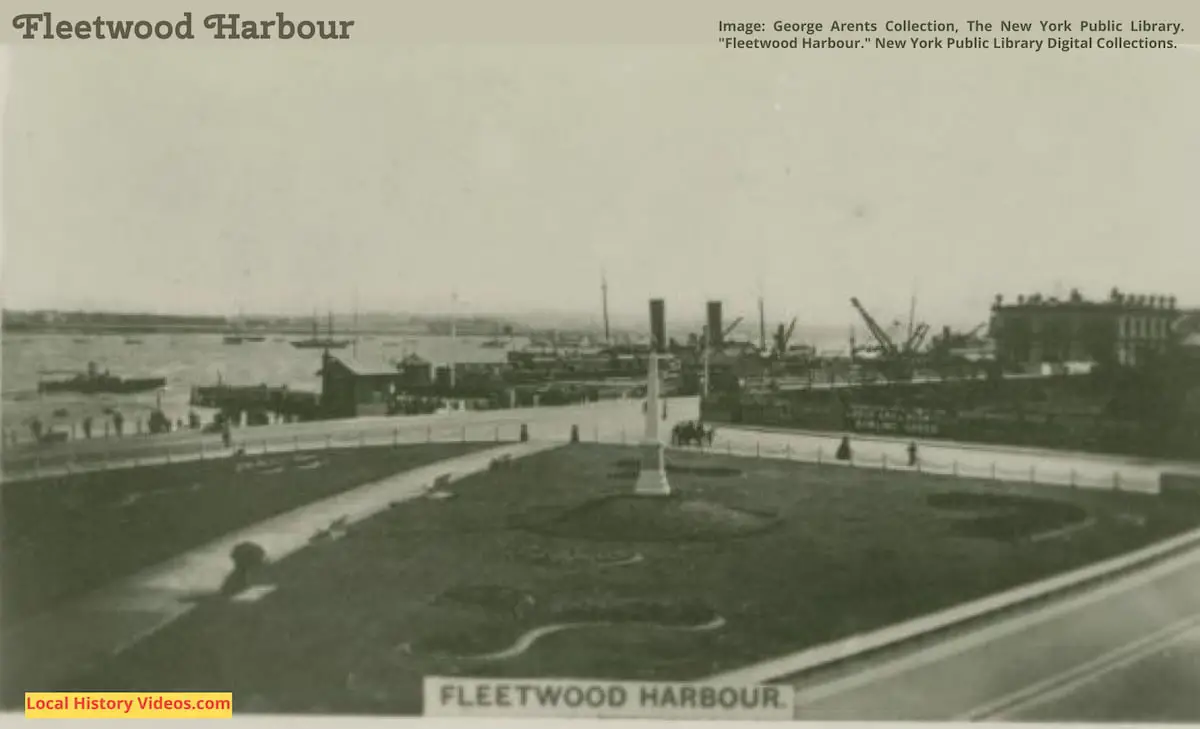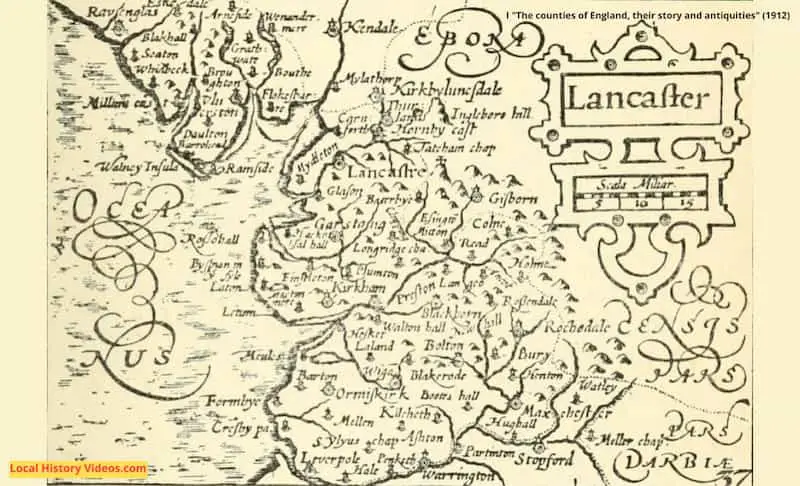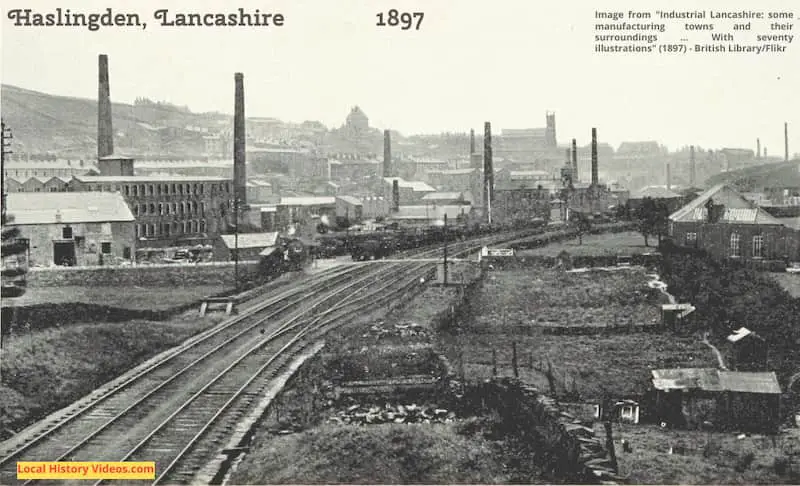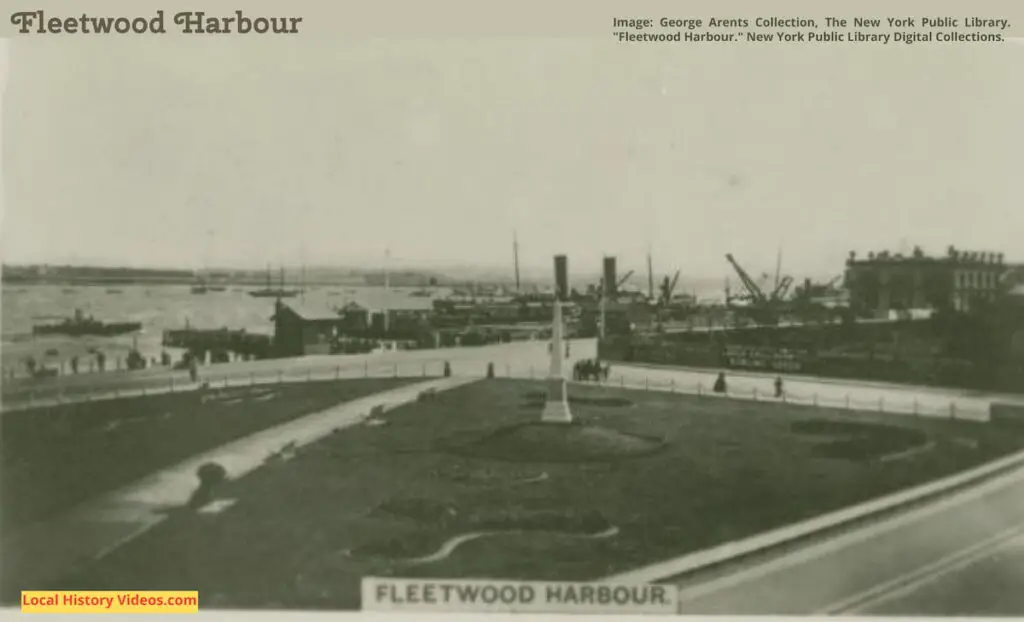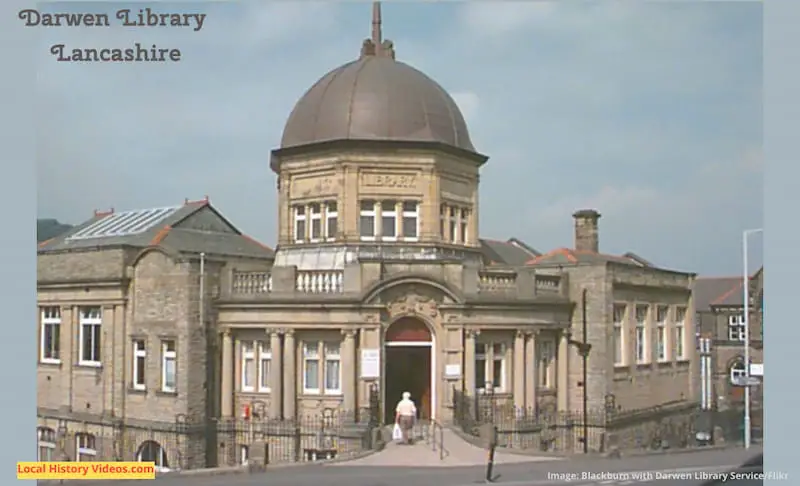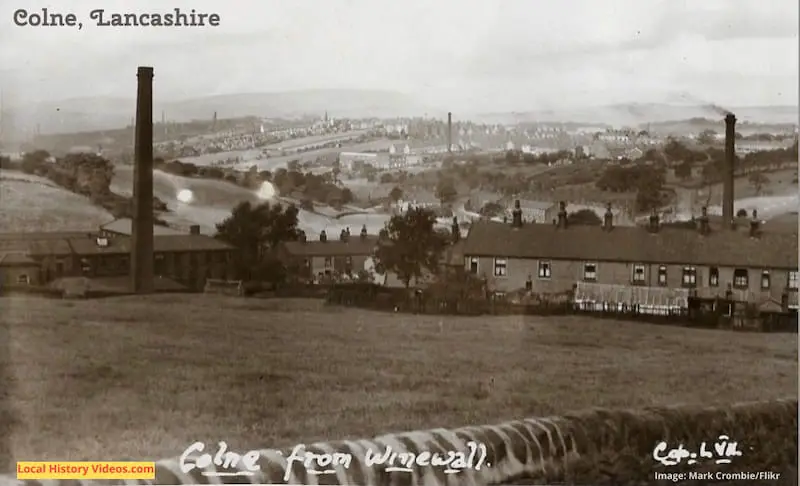Glimpse history through old images of Fleetwood, Lancashire, in North West England, UK.
1930s Model Yatchs
1937
Britain lost the model yatching cup to Norway in 1937, when the Nazi Swastika was Germany’s national flag.
Model Yacht Racing At Fleetwood (1937) – British Pathé on YouTube
1939
Back in August 1939, £100 was a serious sum of money.
So when the international championship of the Model Yatching Association offered a £100 prize, entrants travelled to Fleetwood’s municipal yatching pond came from far and wide, including some Germans whose national flag was the Swastika.
This was August 1939. The Second World War began on 1st September 1939.
In this first newsreel, it’s described as a competiton between five nations, all white Europeans. The next newsreel shows it as an international affair, showing both a Black man and a man who had travelled from Africa for the event.
Fleetwood (1939) – British Pathé on YouTube
Unfortunately the next (shorter) newsreel clip of the same event, which may be filming preparations rather than the competition itself, includes a few seconds of the next item and its racist narration.
Model Yachts At Fleetwood. – British Movietone on YouTube
Ladies Bowling 1939
This was the year Fleetwood’s annual one-day ladies bowling tournament had its busiest year to date. More than 400 ladies from all over Lancashire took part.
Fleetwood Aka Ladies Bowling Tournament (1939) – British Pathé on YouTube
Gale Damage 1939
Gale winds caused havoc around Britian in 1939, including at Fleetwood where the £150,000 sea wall was damaged and parts of the promenade fell away.
Gale Damage In Lancashire (1939) – British Pathé on YouTube
Landladies’ Race 1962
This silent footage shows plenty of local women and children turning out to watch a large group of middle aged and older ladies racing along the seafront with a tea tray.
The winner received a set of cups and saucers, bedding, a vase, a casserole dish, and several other household items.
Landladies Race At Fleetwood (1962) – British Pathé on YouTube
Fleetwood Tram Sunday 1990
The first annual Fleetwood Tram Sunday took place in 1985, part of the celebrations for the anniversary of Blackpool trams.
The next three videos of Tram Sunday in 1990, 1995 and 1997, include several streets of businesses and homes, and hundreds of people of all ages slowly walking along enjoying their day.
1990
Fleetwood Tram Sunday 1990 – Nicholas Tozer on YouTube
1995
FLEETWOOD TRAM SUNDAY JULY 1995 – DaveSpencer32 on YouTube
1997
FLEETWOOD TRAM SUNDAY 1997 – DaveSpencer32 on YouTube
Historic Book
Extract from
J. H.’s Guide to Blackpool & Fleetwood
by John Heywood
Published in 1869
Pages 28-31
FLEETWOOD is a town of modern growth, and is a fine example of what can be accomplished by well-directed talent and enterprise. Not very many years ago the ground whereon it stands was a barren and unattractive spot, seldom trodden by human foot. The rabbits and sea-birds might, in a sense, be said to hold undisputed sovereignty over it; the screaming of the latter, and the moaning of the waves as they laved its muddy shores, being varied only by the din of storm and tempest, the lightning’s vivid flash, and the roar of heaven’s artillery. Thanks to the indomitable enterprise of the late Sir Peter Hesketh Bart., a thorough transformation has been effected; and now we have a town and port of respectable size and great commercial importance.
The position of the place was such as to guarantee undoubted facilities for the establishment of a port, and the cultivation of an extensive export and import trade.
Sir Peter, who was the owner of the soil, was the first to suggest the desirability of connecting Fleetwood with the great centres of industry by means of a railway; and in 1835 parliament granted the necessary powers for the formation of a line, and five years later it was opened for traffic.
The result was that port charges and harbour dues over Liverpool were saved, and ready communication obtained with the busy marts of Lancashire and Yorkshire.
Collaterally with the construction of the railway, hotels, houses, and shops were built, thoroughfares formed, and a pier and landing-stage constructed. The harbour had also undergone improvement: it was deepened, provided with beacons, and well lighted.
Fleetwood has at the present time a population of about 6,000, who depend largely upon the North Irish trade, five steamers running daily between the port and Belfast. It has also a fair coasting trade.
The harbour was laid out under Captain Denman, R.N., formerly marine surveyor of Liverpool.
The entrance is safe and easy — it is nearly straight; and two miles from the harbour there is at least 28 fathoms of water. Vessels drawing 21 feet can float at their moorings in the harbour at low water; and the improvements which are now taking place will, when completed, it is confidently anticipated, greatly enhance the character of the port, and bring to Fleetwood many cotton and timber-laden vessels which now go to Liverpool.
On the 2nd of June, 1869, the first sod for the construction of new docks was cut, and the occasion was made one of great rejoicing; indeed, Fleetwood never before wore so gay an appearance; nor was the air, at any previous holiday, made to reverberate with so many huzzas and joyous sounds.
The anticipations which were formed concerning this port, when, so late as 1836, it was a mere rabbit warren, have not yet been realised, and one of the main causes of this has, it is supposed, been a want of good dock accommodation.
In 1864 a scheme was projected for the formation of docks, an embankment, and other works, and also with the view of reclaiming certain lands covered by water. This scheme met with support from the Lancashire and Yorkshire Railway Company, and it was embodied in a bill, which received the sanction of Parliament. A prospectus was subsequently issued for an undertaking requiring a capital of £300,000, in £20 shares. But the trustees of the Fleetwood estate, who were co-promoters of the bill, afterwards thought it advisable that the expenditure should be such that they might carry out the contemplated works at their own expense.
New plans were drawn; the Lancashire and Yorkshire Railway Company surrendering their powers, and promising to co-operate with the trustees.
The new plans, in accordance with which the docks will be formed, reduce the expenditure to about £50,000. The docks will be 600 feet long and 400 feet wide. The excavations will be only 16 feet, by which 23 feet of water will be obtained from the dock sill at high water with an ordinary spring tide.
The engineer is Mr. Cox, of London; and the contractor, Mr. Chambers, also of London.
Above the point where the docks will be formed, considerable improvements, by embanking, have been made. About 100 acres of Kirkscar Bay have been reclaimed, and it is believed that in time more waste land will be secured for cultivation.
Fleetwood is distant ten miles from Blackpool: the estuary of the River Wye flows past it; and it is the terminus of the Preston and Wyre Railway; and it will be readily inferred from what we have already stated, that to the establishment of the railway, and its adaptability as a port for steam traffic, its present importance is mainly due.
The town contains a few excellent hotels, houses of stone, and other buildings, nearly all of which overlook the river and bay, and present a prepossessing appearance. The promenade is of ample proportions, and is a favourite resort of visitors in the summer months.
The town is situated on a dry, sandy soil; and the surrounding scenery, if not gorgeous, is such as to present a coup d’oeil of much beauty; and those who are fond of yachting or riding may meet with ample means of gratifying their predilections.
The disciples of Izaak Walton, too, may indulge their taste for piscatorial sports, and though not quite in the same way as their master did, nor surrounded by the sights and sounds which so increased his felicity, they may, nevertheless, meet with most gratifying sport.
Fleetwood is tolerably well provided with places of worship. The church of St. Peter, which is built of stone, was opened in 1841, and is capable of accommodating 450 persons. In addition, there is a Roman Catholic church, and Wesleyan, Primitive Methodist, and Independent chapels.
In West Street are the Testimonial Schools, which derive their name from the circumstance of their having been built by subscription as a testimonial to the founder of the port. They are under Government inspection, and are capable of affording accommodation for the education of upwards of 800 children.
A Government School of Musketry has been established in the port, at which 60 officers are stationed, and connected with which are a commodious barracks, and an excellent ground for rifle practice.
A favourite resort of visitors is “The Mount,” on which is an intersecting Chinese roofed structure, octagonal in form, at which refreshments may be obtained, suited to a variety of tastes. From this spot a commanding view is obtained of the surrounding prospect, including the harbour, and the craft gliding upon the bosom of the distant sea.
There is a Tea Garden about a mile from Fleetwood, on the Blackpool Road, at which, as its title indicates, visitors may be served with the beverage which cheers, but not inebriates, and also, during their season, with strawberries.
Attached to the gardens is, what we suppose, we must term an exhibition of Zoological specimens, consisting principally of monkeys; and also a bowling-green.
From Fleetwood many pleasant excursions may be made. A steamer runs daily to Peel, whence parties may proceed to the Lake District. The railway conveys passengers to Furness Abbey and Coniston. A visit to the fine old Abbey at Furness is worth making by those who have a liking for the sublime; the building being grand, even in its desolation. To Furness and back is a very pleasant day’s journey. The steamer returns at an hour, which allows ample time for an inspection of the Abbey and the surrounding scenery.
More about Lancashire
- Old Images of Lancashire, England
- Old Images of Skelmersdale, Lancashire
- Old Images of Haslingden, Lancashire
- Old Images of Fleetwood, Lancashire
- Old Images of Darwen, Lancashire
- Old Images of Colne, Lancashire
More Lancashire local history resources
Back to Home page

